1). Modes of MBMS (Multimedia Broadcast Multicast Service)
The MBMS bearer service offers two modes in UMTS:
- Broadcast Mode;
- Multicast Mode
2). Two important scenarios have been identified for E-MBMS:
- One is single-cell broadcast (thru mixed carrier), and the second is MBMS Single Frequency Network (MBSFN via Multi-cell thru mixed or dedicated carrier).
3). Enhanced Function supported for MBMS or E-MBMS:
- GERAN/UTRAN
- UE
- BM-SC
- SGSN and GGSN
- MBMS-GW (from LTE)
- MCE (from LTE)
- E-UTRAN (from LTE)
4). MBSFN = Multimedia Broadcast multicast service Single Frequency Network
- MBSFN is a new feature that is being introduced in the LTE.
- MBSFN is envisaged for delivering services such as Mobile TV using the LTE infrastructure, and is expected to be a competitor to DVB-H-based TV broadcast.
- MBSFN Synchronization Area: NodeBs/eNodeBs can be synchronized
- MBSFN transmission or a transmission in MBSFN mode: from multiple cells within the MBSFN Area
5). MBSFN Area and Cell:
- MBSFN Area: consists of a group of cells within an MBSFN Synchronization Area of a network, which are co-ordinated to achieve a MBSFN Transmission. A cell within an MBSFN Synchronization Area may form part of multiple MBSFN Areas, each characterized by different transmitted content and participating set of cells.
- MBSFN Synchronization Area: an area of the network where all NodeBs/eNodeBs can be synchronized and perform MBSFN transmissions. MBSFN Synchronization Areas are capable of supporting one or more MBSFN Areas. On a given frequency layer, a NodeB/eNodeB can only belong to one MBSFN Synchronization Area. MBSFN Synchronization Areas are independent from the definition of MBMS Service Areas
- MBSFN Transmission or a transmission in MBSFN mode: a simulcast transmission technique realised by transmission of identical waveforms at the same time from multiple cells. An MBSFN Transmission from multiple cells within the MBSFN Area is seen as a single transmission by a UE.
- MBSFN Area Transmitting and Advertising Cell: A cell within a MBSFN Area which is contributing to the MBSFN Transmission and advertises within the cell the availability of the MBSFN Transmission.
- MBSFN Area Transmitting-Only Cell: A cell within a MBSFN Area which is contributing to the MBSFN Transmission but does not advertise within the cell the availability of the MBSFN Transmission. The need for this type of cell is FFS.
- MBSFN Area Reserved Cell: A cell within a MBSFN Area which does not contribute to the MBSFN Transmission. The cell may be allowed to transmit for other services but at restricted power on the resource allocated for the MBSFN transmission e.g. PTP for users at the centre of the cell.
6). MBSFN Overview:
- In MBSFN, the transmission happens from a time-synchronized set of eNBs using the same resource block. This enables over-the-air combining, thus improving the Signal-to-Interference plus Noise-Ratio (SINR) significantly compared to non-SFN operation.
- The Cyclic Prefix (CP) used for MBSFN is slightly longer, and this enables the UE to combine transmissions from different eNBs, thus somewhat negating some of the advantages of SFN operation.
- There will be six symbols in a slot of 0.5ms for MBSFN operation versus seven symbols in a slot of 0.5ms for non-SFN operation.
- 3GPP has defined a control plane entity, known as the MBMS Coordination Entity (MCE) that ensures that the same resource block is allocated for a given service across all the eNBs of a given MBSFN area.
- It is the task of the MCE to ensure that the RLC/MAC layers at the eNBs are appropriately configured for MBSFN operation.
- 3GPP has currently assumed that header compression for MBMS services will be performed by the E-MBMS gateway.
- Both single-cell MBMS and MBSFN will typically use point-to-multipoint mode of transmission.
7). In E-UTRAN, MBMS can be provided
Case 1). on a frequency layer dedicated to MBMS (set of cells dedicated to MBMS transmission i.e. set of "MBMS dedicated cells") and/or
Case 2). on a frequency layer shared with non-MBMS services (set of cells supporting both unicast and MBMS transmissions i.e. set of "Unicast/MBMS mixed cells").
- In both cases, single frequency network mode of operation is possible for MBMS transmission (MBSFN).
8). MCE for LTE E-MBMS
- In the 1st scenario depicted on the left MCE is deployed in a separate node.
- In the 2nd scenario on the right MCE is part of the eNBs.
- These eMBMS architecture deployment alternatives shall be applicable to both multi-cell and single cell transmission mode.
9). Multi-cell/multicast Coordination Entity (MCE) in E-MBMS
- 3GPP has defined a control plane entity, known as the MBMS Coordination Entity (MCE) that ensures that the same resource block is allocated for a given service across all the eNBs of a given MBSFN area.
- It is the task of the MCE to ensure that the RLC/MAC layers at the eNBs are appropriately configured for MBSFN operation.
- The MCE is a logical entity – this does not preclude the possibility that it may be part of another network element – whose functions are
- the allocation of the radio resources used by all eNBs in the MBSFN area for multi-cell MBMS transmissions using MBSFN operation.
- Besides allocation of the time/ frequency radio resources this also includes deciding the further details of the radio configuration e.g. the modulation and coding scheme.
- The MCE is involved in MBMS Session Control Signaling. The MCE does not perform UE - MCE signaling.
10). E-MBMS Gateway (MBMS GW) Overview
- One or more MBMS GW function entities may be used in a PLMN.
- Note that MBMS GW may be stand alone or co-located with other network elements such as BM-SC or combined S‑GW/PDN GW.
- 3GPP has currently assumed that header compression for MBMS services will be performed by the E-MBMS gateway
- The MBMS GW is a logical entity – this does not preclude the possibility that it may be part of another network element – that is present between the BMSC and eNBs whose principal functions is
- the sending/broadcasting of MBMS packets with the SYNC protocol to each eNB transmitting the service.
- The MBMS GW hosts the PDCP layer of the user plane and uses IP Multicast as the means of forwarding MBMS user data to the eNB.
- The MBMS GW performs MBMS Session Control Signalling (Session start/stop) towards the E-UTRAN.
- It provides an interface for entities using MBMS bearers through the SGi-mb (user plane) reference point;
- It provides an interface for entities using MBMS bearers through the SGmb (control plane) reference point;
- IP multicast distribution of MBMS user plane data to eNodeBs (M1 reference point);
- IP multicast distribution of MBMS user plane data to RNCs (M1 reference point);
- It allocates an IP Multicast address to which the eNodeB/RNC should join to receive the MBMS data. This IP Multicast address is provided to the eNodeB via MME and to the RNC via SGSN;
- MBMS GW supports fall back to point to point mode where applicable for UTRAN access;
- MBMS GW can communicate with multiple control plane entities (i.e. MME, SGSN and BM-SCs)
11). MBMS control & functions in E-UTRAN (eNB)
The E-UTRAN supporting MBMS comprises eNBs and co-ordinating functions.
The functions hosted by the eNB may be:
- Scheduling and transmission of MBMS control information;
- Scheduling of single-cell MBMS transmissions;
- Transmission of single-cell and multi-cell MBMS services;
- Radio bearer control for MBMS.
The co-ordinating functions may include:
- Distribution of MBMS services;
- Co-ordination of multi-cell MBMS transmissions;
- MBMS E-RAB control.
12). E-MBMS Interfaces (M1 ~ M3)
12-1). Control Plane Interfaces
“M3” Interface: MCE – MBMS GW
- An Application Part is defined for this interface between E-MBMS Gateway and MCE.
- This application part allows for MBMS Session Control Signalling on E-RAB level (i.e. does not convey radio configuration data).
- The procedures comprise e.g. MBMS Session Start and Stop.
- SCTP is used as signalling transport i.e. Point-to-Point signalling is applied.
“M2” Interface: MCE – eNB
- An Application Part is defined for this interface, which conveys at least radio configuration data for the multi-cell transmission mode eNBs and Session Control Signalling.
- SCTP is used as signalling transport i.e. Point-to-Point signalling is applied.
MBMS control plane function supporting for UTRAN:
- The MBMS control plane function is supported by MME for E-UTRAN access and by SGSN for UTRAN access.
- One or more MBMS control plane functional entities are used in a PLMN.
MME supports the following functions in order to enable MBMS support for E-UTRAN:
- Session control of MBMS bearers to the E-UTRAN access (including reliable delivery of Session Start/Session Stop to E-UTRAN);
- Transmit Session control messages towards multiple E-UTRAN nodes;
- It is FFS whether there is a need to filter the distribution of Session Control message to E-UTRAN nodes based on MBMS service area;
- It provides an Sm interface to the MBMS GW function: it receives MBMS service control messages and the IP Multicast address for MBMS data reception from MBMS GW function over the Sm interface
12-2). User Plane Interface
“M1” Interface: MBMS GW – eNB
- This interface is a pure user plane interface. Consequently no Control Plane Application Part is defined for this interface.
- IP Multicast is used for point-to-multipoint delivery of user packets for both single cell and multi-cell transmission.
13). 3GPP has defined a SYNC protocol between the E-MBMS gateway and the eNBs to ensure that the same content is sent over-the-air from all the eNBs.
- The eBM-SC is the source of the MBMS traffic
- The E-MBMS gateway is responsible for distributing the traffic to the different eNBs of the MBSFN area.
- IP multicast may be used for distributing the traffic from the E-MBMS gateway (E-MBMS GW) tothe different eNBs (eNB).
- The MBMS Synchronisation protocol (SYNC) is located in the User plane of the Radio Network layer over the Iu interface: the Iu UP protocol layer. (Iu is used between RNS --- Core Network and UTRAN --- SGSN)
- The SYNC protocol for UTRAN is used to convey user data associated to MBMS Radio Access Bearers.
- One SYNC protocol instance is associated to one MBMS RAB and one MBMS RAB only. If several MBMS RABs are established towards one given UE, then these MBMS RABs make use of several SYNC protocol instances.
- SYNC protocol instances exist at Iu access point i.e. at CN and UTRAN.
- Whenever an MBMS RAB requires transfer of user data in the Iu UP, an Iu UP protocol instance exists at each Iu interface access points. These Iu UP protocol instances are established, relocated and released together with the associated MBMS RAB.
- SYNC protocol for UTRAN. It is on top of TNL in Iu user plane, i.e. Iu userplane TNL transports SYNC protocol PDUs over the Iu interface.
- As a specification convention, within this specification, the interface between the Core Network and the Radio Access Network is denoted as the “RAN Access Interface”, the termination point at the Radio Access Network is denoted as “RAN Access Node”, the termination point at the Core Network is denoted as “Core Network” (CN). Further, “MBMS RAB” denotes the Radio Access data bearer together with the RAN Access Interface data bearer for MBMS service user data transmission.
- For the application of the SYNC protocol to UTRAN, the RAN Access Interface is the Iu interface, the RAN Access Node is the RNC.
Operation of the SYNC protocol
- The SYNC protocol layer is present for data streams that originate in the CN and carry additional information within a specific user plane-frame.
- The two strata communicate through a Service Access Point (SAP) for Non Access Stratum (NAS) Data Streams transfer.
Interfaces of the SYNC protocol layer
- As part of the Access Stratum responsibility, the SYNC protocol layer provides the services and functions that are necessary to handle non access stratum data streams for MBMS. The SYNC protocol layer is providing these services to the UP upper layers through a Dedicated Service Access Point used for Information Transfer.
- The SYNC protocol layer is using services of the Transport layers in order to transfer user plane PDUs over the RAN Access interface.
SYNC protocol layer services: The following functions are needed to support the SYNC protocol:
- Transfer of user data along with synchronisation information;
- Transfer of synchronisation information without user data.
Services Expected from the UP Data Transport layer: The SYNC protocol layer expects the following services from the Transport Network Layer:
- Transfer of user data.
- no flow control
SYNC Protocol Overview (25.446)
- SYNC Procedure - Transfer of User Data for MBMS
- SYNC Procedure - Transfer of Synchronization Information for MBMS
- SYNC Protocol - Frame format and PDU formats
- SYNC Protocol - Coding of information elements in frames
14). Two types of MBMS transmissions in E-UTRA/E-UTRAN:
a) Single-cell transmission (no MBSFN operation):
- The MBMS service, e.g. message distribution, is transmitted only on the coverage of a specific cell;
- The MBMS service (MTCH and MCCH) may be transmitted on DL-SCH (for p-t-m) or MCH (FFS);
- Combining of MBMS transmission from multiple cells is not supported;
- Scheduling is done by the eNB;
- Counting for switching between p-t-p and p-t-m radio bearer may be supported (FFS);
- The p-t-m/p-t-p switching points are either dynamically decided based on counting mechanism or semi-statically configured by O&M (FFS).
- UEs that are allocated a dedicated uplink feedback channel are in RRC_CONNECTED state.
- Multiple UEs can be allocated dedicated uplink feedback channels identical to those used in unicast transmission, which enables them to report HARQ Ack/Nack and CQI.
- To avoid unnecessary MBMS transmission on MTCH in a cell where there is no MBMS user,MCCH may announce only the availability of MBMS service(s) and the network can detect the presence in a cell of at least one MBMS user interested in the MBMS service (e.g. by polling or through UE service request) before starting the transmission on MTCH.
b) Multi-cell transmission (MBSFN operation):
- The MBMS service (MTCH and MCCH) is transmitted on MCH;
- Combining is supported with SFN - Combining of MBMS transmission from multiple cells is supported;
- Synchronous transmission of MBMS within its MBSFN Area;
- MTCH and MCCH are mapped on MCH for p-t-m transmission;
- The MBSFN Synchronization Area, the MBSFN Area, and the MBSFN Transmitting, Advertising, and Reserved cells are semi-statically configured e.g. by O&M.
- Scheduling of each MCH is done by the MCE.
- The content synchronization for multi-cell transmission is provided by some principles:
- AMC based on non-AS level feedback is FFS.
15). An E-UTRAN cell supporting MBMS is either an MBMS-dedicated cell or an MBMS/Unicast-mixed cell.
1). MBMS-dedicated cell
When a cell belongs to a frequency layer dedicated to MBMS transmission:
- MTCH and MCCH are mapped on MCH or DL-SCH (FFS) for p-t-m transmission;
- No uplink;
- No counting mechanism in another (unicast) cell supported;
- No support for unicast data transfer in the cell;
- The occurrence of paging messages on the frequency layer dedicated to MBMS transmission is (FFS):If paging messages were allowed, the UE could answer in a non-E-UTRA cell e.g. UTRA cell (FFS);
2). MBMS/Unicast-mixed cell
When a cell does not belong to a frequency layer dedicated to MBMS transmission:
- MTCH and MCCH are mapped on MCH or DL-SCH for p-t-m transmission;
- Transmission of both unicast and MBMS in the cell is done in a co-ordinated manner
16). For further information refers to
https://docs.google.com/fileview?id=F.a22ea026-06a1-4f26-8e48-911a73e911a5
.jpg)
+(1-Slide).jpg)
.jpg)
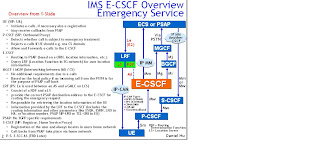+Overview+(1-Slide).jpg)
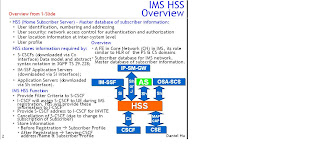.jpg)
.jpg)
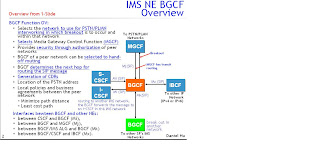.jpg)
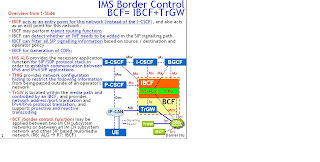+Overview+(1-Slide).jpg)
+Overview+(1-slide).jpg)
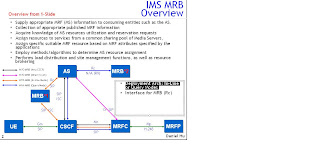.jpg)
+(1st+Slide).jpg)
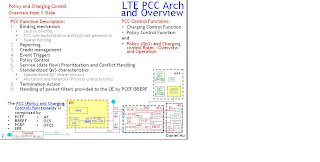+(1st+Slide).jpg)
++(1st+Slide).jpg)